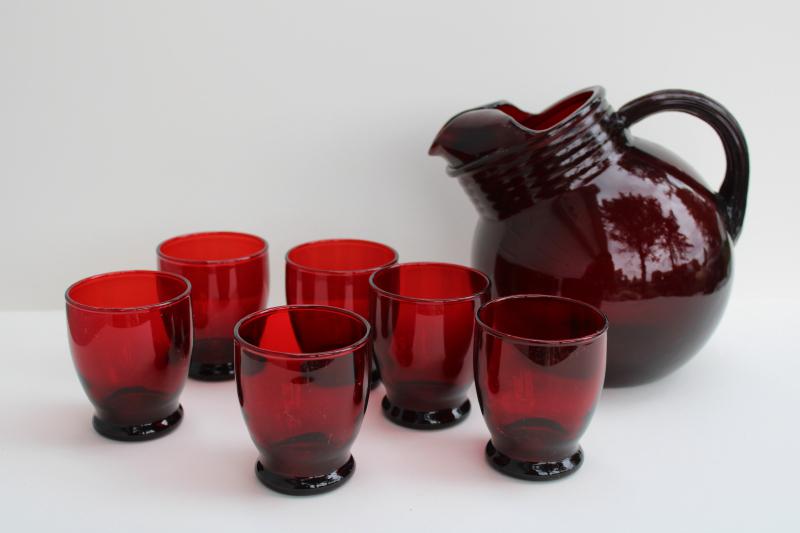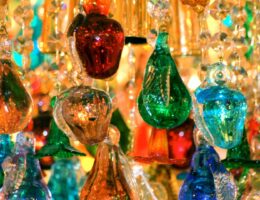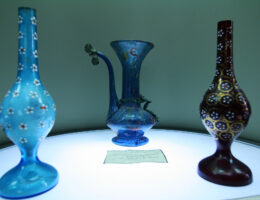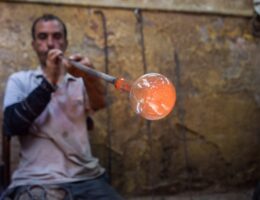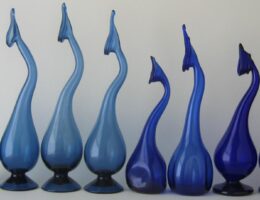IRAN ART EXHIBITION: GLASS ART IN IRAN BACKS TO ANCIENT TIMES
Archaeological excavations have shown the spread of blown glass art in the Iran of the Achaemenid era. Glass bottles were found near the Choghā zanbil temple. With the discovery of glass objects dating back to the Parthian and Sassanid periods, it is possible to state that the glass industry was fully flourishing in Iran. Two processing methods were used (“Damidan dar qāleb” and “Damidane āzād”).
The oldest glass object in Iran dates back two thousand years before the birth of Christ. Some finds, ranging from a period ranging from 2000 to 1000 BC, consist of bottles for perfumes, bracelets, bowls and carafes. From the Seljuk era to that of the Mughals, artists from different cities of Iran have distinguished themselves for the production of splendid tableware enriched with various decorations (enameled, carved or with added images).
With the advent of Islam, most of these artists migrated to Damascus or Aleppo, Syria. Here not only did the shape of the glass change drastically, but the presence of paintings and calligraphy works on it (operated by colored glazes) became typical. A type of glass called “Mināyi” also made its debut.
The Seljuk period (5th and 6th centuries post-Hijra) is considered the first period of splendor of the art of blown glass in Iran.
Later, with the advent of the Safavid dynasty, several factories were built both in Esfahān and in Shirāz. The Iranian artists were also supported by a large group of Venetian experts.

IRAN ART EXHIBITION: Nowadays, some examples of this art dating back to ancient Iran are exhibited at the Ābgineh Museum in Tehrān. Currently, several factories are operating, both in Tehrān and in other cities – Esfahān, Meymand (Fārs), Qamsar (Kāshān), etc.
Mo’arraqe shisheh (The glass mosaic)
One of the typical manual artistic products of Esfahān is the Mo’arraqe shisheh. From the Safavid era onwards, a type of glass mosaic was used to decorate important buildings and palaces. The images created were totally geometric. This art is still used today to decorate traditional buildings.
Painting on the back of the glass
The painting on the back of the glass is an imported art, in the Safavid era, in Iran from Eastern Europe, India and China.
Some themes and motifs used in painting on the back of the glass are: flowers, goals or morghs, religious episodes, images of panoramas, verses of the Koran, etc.
